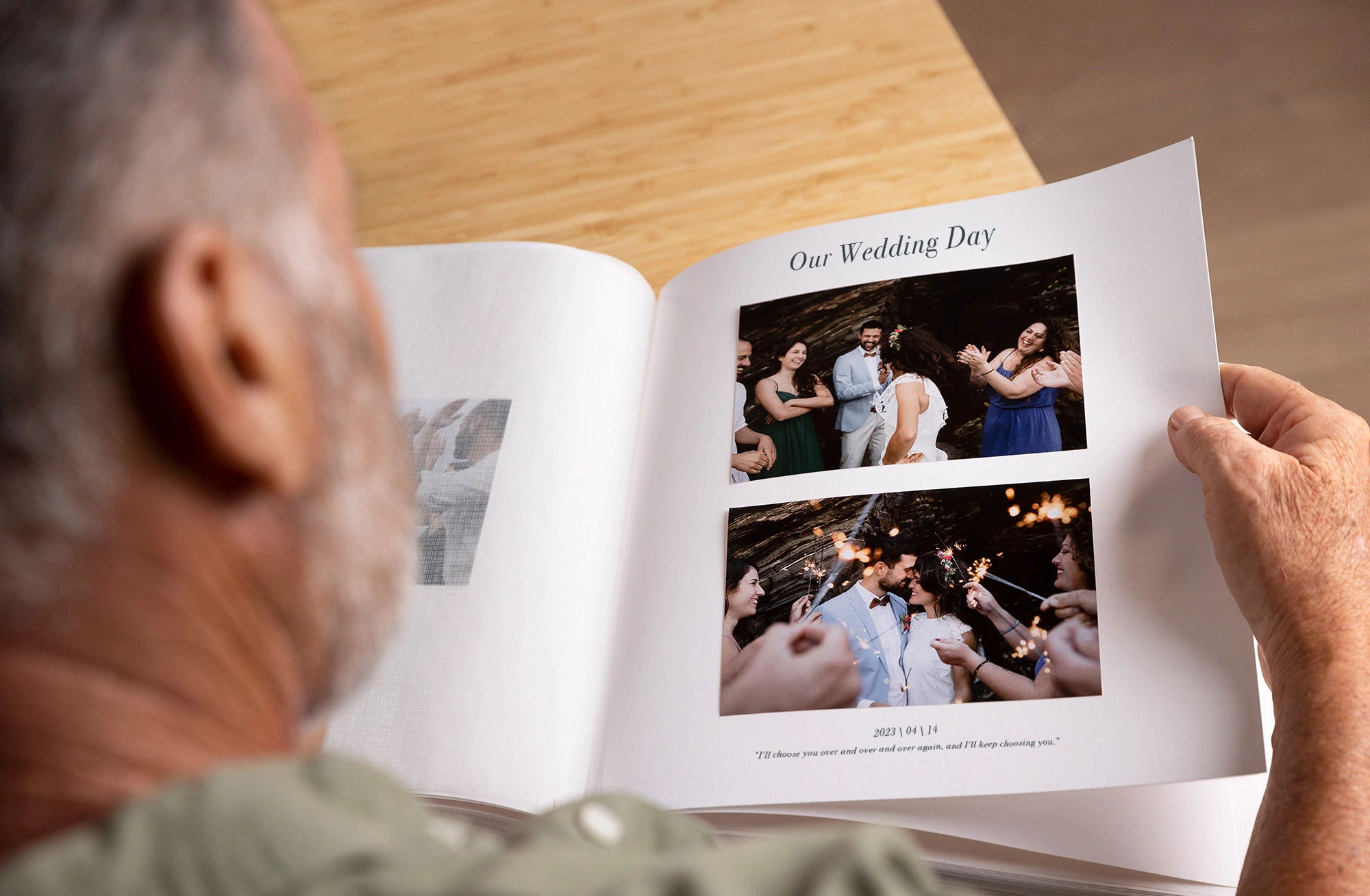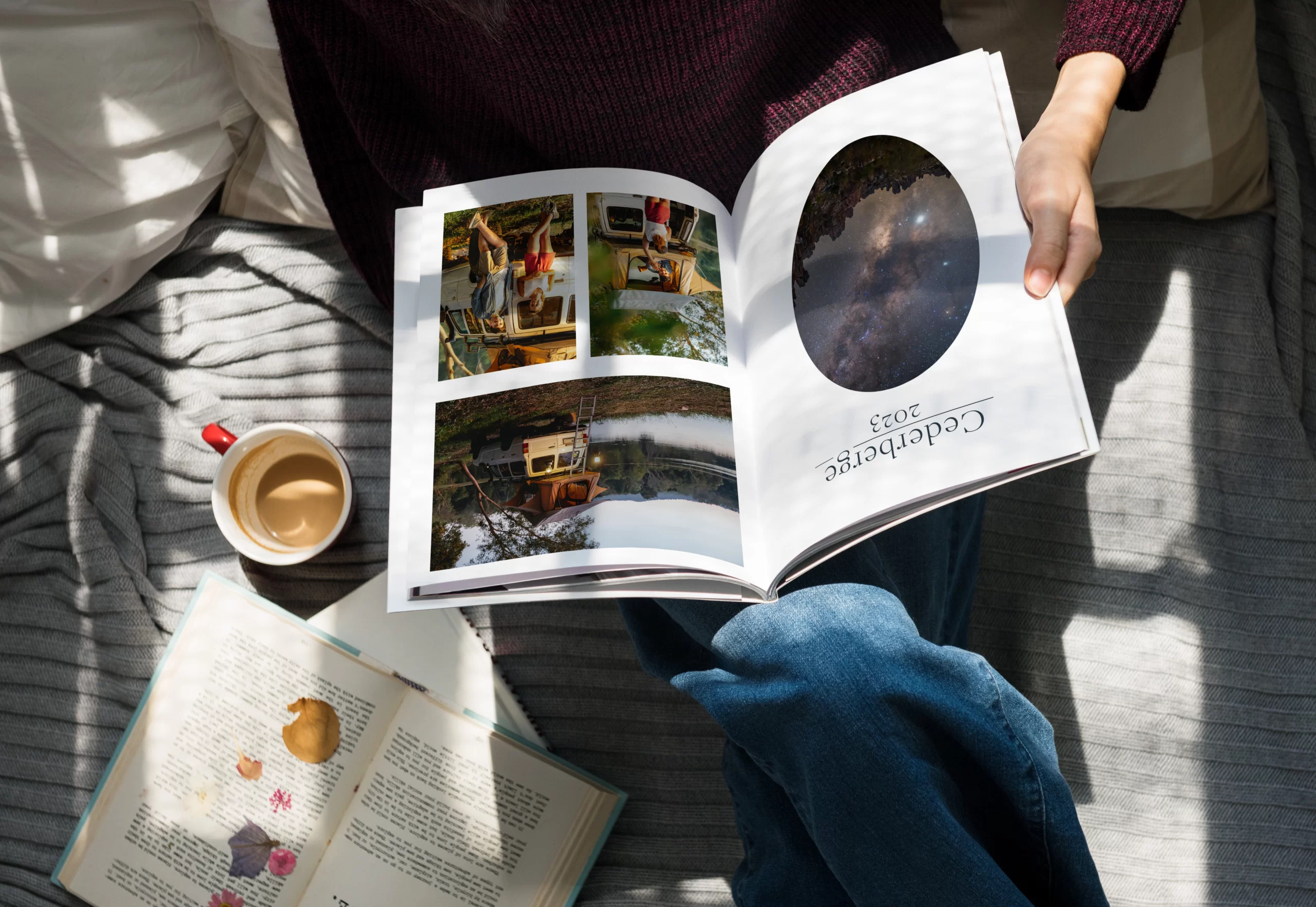Print Room & Framing Blog
How To Create A Photobook That Tells A Story
Share this article:

A photobook is more than just a collection of images; it’s a vessel for storytelling, a medium that allows you to curate and arrange photographs in a way that evokes emotions, sparks curiosity, and immerses the viewer in a captivating tale. In a world saturated with digital images and fleeting moments, there is something undeniably magical about a photobook that tells a story. It goes beyond preserving memories; it breathes life into each page, inviting the reader to embark on a journey of emotions and discoveries. By employing storytelling techniques, a photobook becomes a canvas on which unique experiences and cherished memories can be painted with vivid detail. Every photograph becomes a chapter, every page a turning point.
In this post, we will delve into the art of crafting a photobook that tells a story, offering valuable tips and advice to help you transform your collection of photographs into a captivating narrative.

Start With A Narrative Arc
At the heart of a captivating photobook lies a narrative arc, a powerful framework that guides the story and captivates the reader from beginning to end. By starting your photobook with a well-defined narrative arc, you establish a clear direction and purpose for your storytelling. This foundation adds depth and meaning to your images and ensures a cohesive and compelling journey for your audience. A narrative arc provides a sense of progression and resolution, allowing you to create a dynamic and engaging photobook experience. Whether you choose a narrative arc that follows a journey, taking your audience through different locations and adventures, or opt for a coming-of-age story that traces the growth and transformation of a subject, the narrative arc serves as the backbone of your photobook, shaping the emotional impact and leaving a lasting impression on your readers.

Choose A Theme Or Concept
Choosing a theme or concept is crucial in creating a photobook that tells a cohesive and compelling story. It serves as the thread that weaves the images together, creating a sense of unity and purpose. By carefully selecting a theme or concept, you establish a clear and consistent tone throughout the photobook, enhancing the overall storytelling experience. For instance, you could centre your photobook around a specific event, such as a wedding or a family vacation, allowing the images to capture the essence and emotions of that particular moment. Alternatively, you could explore a theme based on a specific time period, immersing your audience in a nostalgic journey through history. The theme or concept you choose becomes the foundation that connects the images, infusing them with meaning and creating a memorable photobook that resonates with your audience.

Use Captions and Text
In a photobook, captions and text are vital in providing context and depth to the story. They have the power to explain the significance of certain photos, offer insights into the captured moments, and add a personal touch that resonates with the reader. By incorporating captions and text strategically, you enhance the storytelling experience, allowing your audience to connect with the images on a deeper level. When writing captions and text, it’s essential to strike a balance between being concise and informative. Keep your captions brief yet impactful, providing just enough information to give context without overwhelming the visual experience. Additionally, infuse your writing with a personal touch, sharing anecdotes, emotions, or reflections that add a layer of authenticity to the photobook. By effectively utilising captions and text, you can elevate your photobook, transforming it into a narrative that goes beyond the visuals and immerses the reader in a rich and meaningful story.

Play with Design Elements
Design elements are crucial in transforming a photobook into a visually compelling, immersive experience that enhances the storytelling. By strategically incorporating design elements, you can emphasise key moments, create contrast, and evoke specific emotions within your audience. For instance, carefully selecting colour schemes can evoke different moods and set the tone for different sections or chapters of your photobook. Font styles can be chosen to reflect the overall theme or enhance the narrative, adding a layer of visual interest and cohesiveness. Thoughtful layout choices, such as the placement of images and text, can guide the reader’s attention and create a dynamic visual flow. Borders, backgrounds, and other creative elements can add depth, context, or a sense of visual unity to the overall design. By leveraging design elements effectively, you can elevate the storytelling, capturing your audience’s attention and immersing them in a visually stunning photobook that resonates on both an emotional and aesthetic level.

Organise Photos Effectively
Organising photos effectively is crucial when creating a photobook, as it allows you to weave a clear and cohesive story through visual narratives. The order and arrangement of photos play a pivotal role in conveying emotions, capturing memories, and engaging the viewers. By carefully curating the sequence, you can create a sense of pacing and flow that guides the readers through the journey you want to share. Start by considering your photobook’s overarching theme or message and then group photos accordingly. This could be based on events, locations, people, or moods. Additionally, a chronological order can provide a natural progression, allowing viewers to follow the story as it unfolds. Balancing the visual elements and paying attention to the transitions between photos will ensure a seamless and captivating reading experience. Effective organisation empowers you to evoke emotions, highlight key moments, and create a photobook that resonates with its audience.
In conclusion, creating a photobook that tells a story is an enriching and captivating endeavour. By following the key takeaways discussed in this blog post, you can craft a photobook that resonates with your audience and brings your memories to life. Remember to carefully curate your photos, paying attention to the narrative arc and eliminating distractions. Experiment with layout and sequencing, allowing for a logical progression of events. Embrace creativity in design to enhance the storytelling experience and ensure a balanced pacing and rhythm throughout. Most importantly, let your unique voice and perspective shine through.
We encourage all our readers to embark on their photobook projects using the storytelling techniques outlined here to create something extraordinary.
Once you’ve completed your photobook, we invite you to share it with us and the world. Tag us on social media, and let us celebrate your creativity and the incredible stories you have captured.











